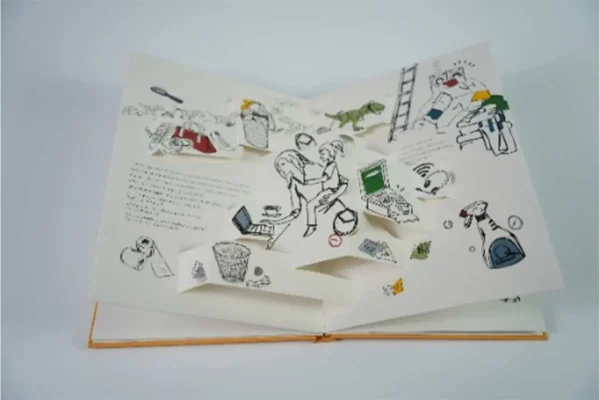The following article is the fourth and final article in Exhibit City New’s Show Floor Etiquette Series. Please click here for the first installment, Click here for the Second Installment, and click here for the third.
The Blueprint for Excellence
by Danelle Dodds, Exhibit City News
The strength of a tradeshow is grounded in its foundation. Without a well-crafted framework, the whole thing could crumble. For the millions of highly trained trade professionals who construct, build, and support the exhibit show industry, their every move must be as precise as each measurement and cut.
The performance pressure for new tradespeople can be as tricky as building a load-bearing wall. But every blueprint starts with a first draft. The legions of skilled trade professionals all had their first days on the job. We tapped Robert Smith, Executive Director and Chief Administration Officer for the Eastern Atlantic States Carpenters Technical Centers (EASCTC), for his insight. The United Brotherhood of Carpenters and Joiners of America (UBC) represents more than half a million men and women of skilled construction and tradeshow professionals. For over 140 years, the organization has carved a path of representation, training, and education. As one of North America’s largest building trade unions, their expertise in the field of labor and journeypersons is surpassed only by their commitment to fostering the next generation of professionals.
Smith gave us the brass tacks on how fledging tradespeople can lay the groundwork for a successful career in their early days.
Clear Communication: The Glue that Holds Everything Together
Communication holds the entire structure together. Misunderstandings and errors often stem from cracks in communication, causing a once-solid plan to wobble. Here’s how to keep those lines of communication straight and strong:
Measure Twice, Cut Once: Poor listening is like misreading a blueprint. Even the best-laid plans can go awry without fully understanding project requirements or instructions. To avoid costly mistakes, practice active listening by asking clarifying questions and taking detailed notes.
Nail Your Message: Clear communication is the binding that holds a project together. Without it, ideas can scatter like sawdust in the wind. The project may falter if you can’t effectively convey your thoughts or address problems. Think of your words as the nails that keep everything in place. Practice precise and purposeful communication to prevent shaky exchanges.
Breaking Down the Walls: In the fast-paced environment of a tradeshow, some might hesitate to ask for guidance, fearing it shows weakness. Seeking help is like checking your level before laying the foundation. It ensures everything starts right. Asking for advice isn’t a sign of weakness; it’s a tool to reinforce your work.
Lost in Translation: Misunderstanding a client’s needs can lead to costly errors. Review client briefs thoroughly with your lead or foreman. Getting a clear picture ensures you’re building according to the client’s vision. Keep lines of communication open to align your efforts with the client’s expectations.
Mind the Gaps: When unsure about a task or procedure, not seeking clarification is like cutting a board without measuring it first. It can throw the whole project off balance. Make it a habit to ask questions and confirm details.
Industry Knowledge: The Nuts and Bolts of Success
Just as a carpenter must be familiar with the materials, understanding the nuances of the trade is crucial. Here’s how to shore up your industry knowledge and avoid costly mistakes:
Solid Foundations: Setting up and breaking down tradeshow displays is a skill. Engage in on-the-job training, shadow experienced carpenters, and attend workshops.
Tools of the Trade: Not knowing your tools can leave you feeling hammered. Gain hands-on experience and participate in training sessions to familiarize yourself with different tools and materials. Understanding your equipment is vital to working with precision and efficiency.
Stay Up to Code: Ignorance of safety protocols and building codes can get you nailed. Operating without understanding safety parameters is risky and unsustainable. Participate in safety training programs, follow regular updates on industry standards, and engage in daily safety meetings at the show site.
Keeping Your Tools Sharp: Just as you must sharpen your tools regularly, you need to keep your knowledge of design trends current. Exposure to various tradeshows and eyeing industry aesthetic developments helps ensure your work is solid, stylish, and relevant.
Project Management Essentials: Nailing the Details
Managing a project is like erecting a booth; every detail matters, and one misstep can lead to a crooked result. Here’s how to ensure your projects stand tall and strong:
Material Issue: Just as careful budgeting ensures nothing goes to waste, proper material handling and efficient cutting techniques are key. Plan wisely to prevent waste and keep everything on track.
Cap Costs: Managing your budget is like laying a solid foundation: get it right, and everything else follows. To avoid financial pitfalls, keep a close eye on costs, choose materials carefully, and track your budget daily with the team lead or foreman.
Quality Check: Quality control is the backbone of your reputation. Perform regular checks, pay attention to detail, and take pride in your work. Overlooking mistakes or defects can undermine the entire structure of your project.
Orderly Conduct: Think of staying organized as the scaffolding that supports your work. Maintain a tidy workspace, provide adequate storage at show sites, and ensure everyone has the right tools for the job to prevent delays and errors.
Safety First: The Foundation of Every Project
Safety isn’t just a priority—it’s the foundation of every project. Without it, everything else crumbles:
Safety Hazards: Attend OSHA safety training, conduct regular inspections, and adhere to safety protocols.
Mastering Customer Service: Laying the Varnish
A project isn’t complete until the customer is satisfied. Technical skills alone won’t cut it; attention to detail and a customer-first mindset are equally important. Here’s how to ensure your customer service skills leave a lasting impression:
Don’t Let Time Chip Away: In the world of tradeshows, time is more precious than gold. Failing to meet deadlines or causing delays can tarnish your reputation. Use effective time management techniques and set realistic deadlines.
Polishing Your Reputation: Your behavior and appearance speak volumes, much like the final coat of varnish on a finely crafted piece of furniture. Training in professional etiquette and wearing appropriate attire set the right tone.
Reinforce Customer Care: Overlooking client concerns is like fitting a joint poorly—it causes friction and misalignment. Practice empathy and active listening, focusing on client satisfaction.
Leveling Up: Unexpected challenges are as common as knots in wood. Your ability to solve problems on the spot is what sets you apart. Develop problem-solving skills through experience, creative thinking, and guidance from your team lead. Mastery in this area is the hallmark of a true craftsperson.
Additional Challenges: Building Strong Habits
The final touches to a project can make all the difference. Strengthening your work habits ensures a solid, lasting career:
Carve Out the Lead: Taking the lead is like creating your own path. Don’t wait for someone else to hand you the map. Encourage self-motivation, delegate tasks, and recognize initiative to drive progress.
Collaborative Structure: Working well with others is essential to project success. Teamwork is the interlocking joints that hold a plan in place. Each member fits together to give the framework strength and stability. To keep the structure intact, participate in team-building exercises and cultivate a positive work environment.
Framework Flexibility: Even the best-laid plans may need to be changed. Onsite revisions can happen regularly. How you adapt to those changes will be a mark of your professionalism. Practice flexibility and adapt to new challenges as they arise.
The Devil’s in the Details: Attention to detail is the grain that gives your work character. Focus on precision and consistently refine your skills to maintain high standards.
Understand the Scope: When you’re first starting out, it can be easy to underestimate a project’s workload. An accurate assessment is a level that keeps your work straight. Plan realistically and monitor progress to ensure you’re staying on track.
The Sharp Edge: Improper tool use can cause damage or accidents. Stay trained in tool safety, maintain your tools, and participate in regular demonstrations to keep your edge.
A Strong Foundation: Just as a structure needs a solid foundation, your body needs strength and stamina for demanding work. Regular exercise and healthy habits support your physical conditioning.
Code Compliance: Code compliance and knowledge of building regulations are critical. Attend regular building and venue updates and training sessions and collaborate with venue staff to ensure alignment.
Balancing Confidence: Confidence is crucial, but too much can cause cracks in your progress. Foster humility and embrace continuous learning. Keep an open mind and absorb the advice of the professionals around you.
Precision of Words: Putting your foot in your mouth will trip you up. Saying the wrong thing to the wrong person can cause unnecessary onsite concerns. Always consult the foreman or lead if you have questions before addressing a customer.
Hitting the Mark: Punctuality and a strong work ethic are timeless. Manage your deadlines with commitment and positivity to maintain a stellar reputation.
Damaged Goods: Accidents happen. The key is to handle them swiftly and responsibly. Always inform your lead or foreman as soon as the damage occurs. Time is essential if something needs to be repaired or reshipped before the show opens. Keeping damage under wraps can lead to onsite issues and unhappy clients.
By refining your skills and approaches, you’ll excel on the tradeshow floor and build a career with a solid and enduring foundation. Embrace each challenge as an opportunity to grow, and you’ll construct a future as strong and reliable as the projects you help create.
Do you have additional advice? Share your insight here to keep building the conversation!
This story originally appeared in the Q4 2024 issue of Exhibit City News, p. 36. For original layout, visit https://issuu.com/exhibitcitynews/docs/ecn_q4_2024/36.
































